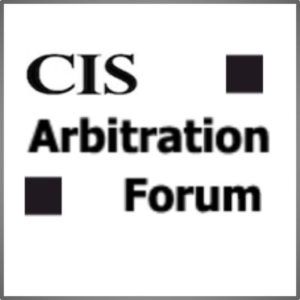The Challenges of the “New Normal” Hearings: A Professional Legal Interpreter’s Perspective
 No-one wants their ability to do their job compromised by faulty or poor-quality equipment. The sudden upscaling of remote working for court and arbitration hearings has highlighted some vital shortcomings in the available infrastructure and technology that present legal interpreters with unique challenges. These must be resolved if remote legal hearings are to continue as a way of life for the foreseeable future.
No-one wants their ability to do their job compromised by faulty or poor-quality equipment. The sudden upscaling of remote working for court and arbitration hearings has highlighted some vital shortcomings in the available infrastructure and technology that present legal interpreters with unique challenges. These must be resolved if remote legal hearings are to continue as a way of life for the foreseeable future.
Since March 2020 the legal profession, like so many others, has been thrust into new ways of working that few could have anticipated at the start of the year. Legal hearings conducted remotely via video conferencing may now be embedded in our everyday routines, but the rapidity with which we have needed to adapt to remote working hasn’t been altogether smooth sailing. The basic infrastructure for conducting proceedings using video conferencing and remote tools may have already been available, but I suggest that it leaves something to be desired when your job is to hear – and interpret – every single word, expression and utterance from a client or witness when you are not in the same room.
Accurate translation is paramount to the benefit of all parties involved, and it’s challenging work even in the most ideal circumstances. But when we’re required to translate from a remote location using audio-visual equipment that can vary widely in quality and efficacy, it can create problems that may at best be a distraction, and at worst cause disruption and delays.
And after several months of lockdown experience doing nothing but remote legal interpreting, I’m writing from a position of authority on this matter. I’m well versed in the art of working remotely – that’s just a part of life – but I’ve now been party to far too many meetings where the technological infrastructure has been of varying and questionable quality and suitability for the task.
I see the following three main issues. First, the lack of proper internet cable connections. Second, the lack of professional audio-visual equipment for use by all involved. Third, on occasion, we cannot see all the required documentation – crucially – in both languages and at the same time and on time.
First E&W High Court remote hearing, March 2020
The first-ever remote High Court hearing, before Mr Justice Teare, was in the CIS matter National Bank of Kazakhstan and the Republic of Kazakhstan v The Bank of New York Mellon and Stati Parties. The Court used Zoom, with support from event production specialist Sparq.
As a “first” the hearing went, from an interpreter’s perspective, remarkably well. But we should be wary of taking platforms like Zoom or BlueJeans-assisted consecutive interpreting on faith as a long-term solution. At a basic level, they are perfectly adequate, but for legal interpreters, they have their limitations.
For example, currently, Zoom only allows one channel to be used per event. As an interpreter, I need to be focused on the person speaking. But as soon as anyone else in the virtual courtroom makes a noise all you can hear is the ambient sounds. Plus the picture also switches to the person making the noise, so the interpreter stops seeing the one person we need to be paying the closest attention to.
Also, IP sound quality often leaves much to be desired. Because interpreters need to speak as we listen to the feed the standard of sound and video feed we receive needs to be much higher than that which speakers or listeners in the room might be using.
Apart from that, we cannot ask a question (e.g. ask the witness or counsel to repeat, clarify, speak louder, etc) without causing a disruption to the proceedings.
Equipment, internet connection, headphones
Quite a few venues have recently begun offering the services of a “hub” where all the technical support and logistics are provided usually to professional quality. “Hybrid” hearings are also perfectly possible: some participants may be using the hub while others, particularly witnesses giving evidence from remote locations, will connect via videoconference.
If we cannot meet face-to-face then – from an interpreter’s perspective – a hub is the next best thing. However should the court or the tribunal direct that using a hub is not an option and that the hearings must proceed fully remotely, i.e. everyone attending from home or office, that’s when the problems start to occur. The use of laptop microphones or rudimentary iPhone headsets severely diminishes the sound quality and will require a greater degree of discipline on the part of all the speakers.
LiveNote or similar transcription screens
A vital part of an interpreter’s role is to be able to follow the real-time transcription feed. This means that when working remotely we need a second laptop to follow the transcript or use one provided by the instructing law firm formatted, vetted, and certified fit for purpose. In the latter circumstance, we will also need the opportunity and time to familiarise ourselves with the real-time transcription hardware installed and to test it well in advance of the hearings. Otherwise again we may be the cause of unwanted disruption and delays.
Magnum and other document display hardware
It’s always helpful for all parties to a remote hearing to be sent all the relevant hard copy documents in advance, and where this does happen it assists in the smooth running of proceedings considerably. Where this isn’t possible or desirable an electronic document display system such as Magnum may be used instead.
However, my personal experience of Magnum is that it is not entirely fit for purpose for legal interpreters. The system is simply not fast or flexible enough.
Uploading documents onto two screens (one for each language) requires a considerable amount of juggling, yet there is usually only one Magnum operator/engineer available. Sometimes the operator fails to upload the documents to the screen fast enough, or to properly scroll down them if and when counsel begins quoting from them. The problem is exacerbated further for documents in foreign languages. We become hostages to the operator’s expertise and competence with no capacity to give them instructions for managing the documents in ways that help us do our jobs.
Conclusions
We’re all living through difficult times and as a group legal interpreters will of course do whatever it takes to assist our clients in overcoming any technical challenges that arise during a remote hearing. But while we are not against remote interpreting in its many forms, the technological infrastructure needs considerable work if it is to be ISO compliant and provide a professional and seamless experience for all involved. I recommend the following.
First, for remote simultaneous hearings that interpreters use a hub with smart, modern and reliable equipment, including ethernet cables and professional headsets.
Second, a specially dedicated protocol is developed and agreed in advance for interpreter intervention in case of insufficient quality of audio-visual input.
Third, interpreters are allowed extra time to find all required documents in the two (if not more) languages without the benefit of a human assistant intimately familiar with the case materials.
Finally, interpreters are provided with a real-time transcription feed and electronic document display functionality allowing them to view both the transcript and the documents in all the languages and at the same time.
This will allow legal interpreters to do their job to the highest standards that everyone expects and that we want – and are ethically and professionally obligated – to deliver.











